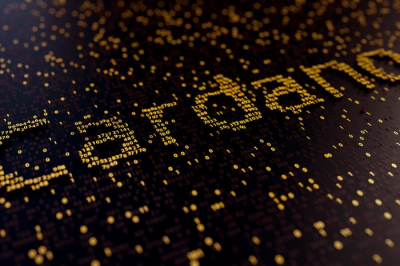Why do we need stable-coins?
The traditional cryptocurrencies like BTC, ETH, or ADA are volatile. It means that the price can go up or down in a short period of time. Sometimes, when the market is turbulent, it can even be 10% or 20% a day. Cryptocurrencies can generally be a good store of value due to their stable and hard-to-change monetary policies. However, they are far from being good as units of accounts and means of exchange. People often incline to just hold cryptocurrencies for the probability of their higher price evaluation in the future. Thus, they are not often directly used for payments. Moreover, when the mood on the markets is bad and the prices of the projects go down, people often sell cryptocurrencies for fiat currencies in order to protect their wealth.
High volatility also prevents the creation of more sophisticated financial services. Believe me, it is not a good idea to take a loan and use a volatile asset for that. Imagine that you borrow 10,000 ADA coins and promise to give them back after two years. At the time of writing, 10,000 ADA coins are worth $4000. You can easily calculate that one ADA coin cost $0,40. What if the price of ADA coins will grow and hit $3 in two years when you will have to pay off the debt? You will find out that you need to pay off $30,000. It will still be 10,000 ADA coins but it will be 7,5x more in the fiat currency. You could have trouble paying off such a big debt. On the other hand, if the price went down it would be easier for you to pay off the debt.
Imagine that you consider establishing some business that would be fully decentralized and you had to deal with the price volatility. The market mood would influence your success or failure more than your skills and ideas.
At the moment, the crypto market rotates around Bitcoin’s halving. It means that it would be smart to start a business at the beginning of 2021 since it is going to probably be a bull year. On the other hand, you would probably fail if you wanted to begin with the business at the beginning of the year 2022. Why? It is highly probable that it might be the start of a 3 years long bearish period. Are we sure? We are not. Can anybody predict the future? Nobody is able to do so. So, is it smart to start a new fully decentralized business? Your possibilities would be quite limited and you will face many risks and unpredictable events.
To see it from a broader perspective, the crypto-space must deliver more utility and usage to people. At the moment, it is mostly about speculation. Projects like Cardano are not built to become speculative assets. One of the goals of the project is to deliver financial services to people that do not have them. People living in developing countries do not need to buy and hold cryptocurrencies. They might not even afford it if they needed to pay a few dollars fees. These people need money and common financial services. They need reliable units of accounts and means of exchange more than the store of value. To be clear, an asset that has attributes of a unit of accounts and a means of exchange must also be the store of value. These people can use decentralized cryptocurrencies but under the condition that they have all three attributes of money.
Decentralization as a concept is great since we can avoid inefficient middlemen and rely on decentralized services and applications. However, we also need some form of financial stability for daily usage. Luckily, decentralization is not bound to the volatility of cryptocurrencies. The solution is straightforward. We need to create cryptocurrencies that keep stable prices. Stable-coins are the solution.
To understand stable coins, we can give you a simple example. Imagine that the price of a new smartphone is 500 USD. You are able to spare 10 USD a day and you want to keep value in something that ensures you that you will be able to buy the smartphone exactly after 50 days. The safest way is to keep USD coins. What are alternatives when you wish to use decentralized technologies? You can use volatile cryptocurrencies and everyday buy ADA, BTC, ETH, or another cryptocurrency for 10 USD. If you do it in this way, there is a risk of losing value but also the possibility that the value will increase. So, you are not sure whether the value of your cryptocurrencies will be exactly 500 USD after 50 days. It can be 400 USD or 600 USD. If you use stable coins then the certainty is significantly higher. To describe stable coins, we can say that there is no risk of loss but also no risk of gain.
How to create stable-coin
Stable-coins must be stable in the context of units of accounts. It means that when you pay by stable coin one day that it is nearly sure that you will pay the same amount tomorrow, after one week and probably after one month. You will pay only a bit more after some longer period of time. It will be caused by inflation that pushes prices of goods higher and makes them more expensive.
The value of stable-coins must be bounded with something that is stable in the traditional world. Unfortunately, nothing is stable in our world. The stability of fiat currencies is kept artificially. Central banks are responsible for the stability of fiat currencies and have a few financial instruments for that. For example, central banks are able to regulate the number of money in circulation and try to maintain a little inflation. In the turbulent times, however, they are forced to print a lot of new money. Thus, it is difficult to keep low inflation. The price of goods can go up and money gets basically devalued. In such situations, money is a worse store of value but it can still be a good unit of accounts and means of exchange.
Stablecoin projects need two things. Firstly, a source of stability must be chosen in the traditional world and used for the stabilization of digital stable coins. For example, a price of USD can be the source. The current price is retrieved via Oracles. Secondly, a valuable asset must or should be used as a peg or collateral. For example, Oracle can provide an exchange rate between USD and ADA coins. Thus, an algorithm knows that a single ADA coin costs 0,45 USD. To create one stable coin that will have the value of one USD can be pegged by 2,22 ADA coins.
The previous example used ADA cryptocurrency as a peg and as you know it is a volatile asset. An algorithm must solve the situation when the price of ADA coins goes up or down since the volatility must not influence the price of stable coins. A different solution can be to use fiat currencies as the peg. For example, it is possible to store 1000 USD in a bank and mint 1000 digital stable coins. It is how Tether does it. The problem with this solution is centralization and trust in the third party. You, as a Tether user, cannot easily verify that the same number of USDT in the circulation is stored in a bank account in the form of real USD.
We can differentiate between two basic types of stable-coins. The first type is pegged by real money. The second type is pegged by volatile cryptocurrencies. It is easier the implement the first one but it is necessary to trust the third party. The second solution is more decentralized since it is easier to verify that there is locked the expected number of cryptocurrencies. On the other hand, it is more difficult to keep the stability of stable coins when volatile assets are used as the peg. It is necessary to hold a higher value of cryptocurrencies than the value of minted stable coins. Thus, it is possible to absorb price volatility mainly when the price of cryptocurrencies goes down. For example, to mint a single stable coin that will hold the value of a single USD coin, 4,44 ADA coins would be needed. A single ADA coin can be 0,45 so actually, the value of 2 USD coins is required. A given algorithm must regulate the minting of stable coins and a kind of incentives must be in place to ensure an influx of value when needed and reward people that provide liquidity.
Let’s meet with SigmaUSD stable-coin
SigmaUSD is a crypto-backed algorithmic stable-coin protocol. ERG or ADA coins will be used as the peg and the algorithm will ensure the stability of SigmaUSD and that there is a sufficient number of coins in a reserve.
Stability, simplicity, and legal compliance are basic design principles. It was decided to use a well-established concept and techniques from the traditional financial world to ensure the stability of coins. It is expected that it will be easier to understand it and thus, it will be easier for regulators to accept the solution. The current solutions in the crypto world are quite complex and hard to understand. The team decided to make it simple and not inventing the wheel again.
Another requirement was to avoid using collateralized debt positions (CDP). It is a popular design pattern but it was proven that it can fail when the market goes down sharply and the network is clogged. In such situations, users are not able to quickly respond to the situation and the algorithm can trigger liquidations of positions.
The SigmaUSD protocol does not use CDP. There are no liquidations and users do not need to send transactions quickly to avoid loss of value. The CDP concept is inherently vulnerable and users risk it when using it.
The approach of the SigmaUSD protocol is to automate the process as much as possible to avoid relying on sending transactions in situations when the network can get clogged.
There are two types of users interacting with the protocol. Reserve providers and SigmaUSD users. Reserve providers submit cryptocurrencies like ADA or ERG coins to the decentralized application (dApp). The dApp mints reserve coins (RC). Each reserve coin represents a certain amount of coins that are kept in the reserve. The application needs to have a certain amount of cryptocurrencies in the reserve in order to be able to mint stable coins. SigmaUSD users also submit cryptocurrencies and the application puts the coins into the reserve. In this case, the application mints SigmaUSD stable-coins.
To summarize that, both reserve providers and SigmaUSD users submit cryptocurrencies to the application. The application puts cryptocurrencies into the reserve and mints either reserve coins or SigmaUSD coins.
The application mints SigmaUSD stable-coins only in the case that a required minimum of cryptocurrencies are present in the reserve. If it is not the case then reserve providers must submit cryptocurrencies. Otherwise, SigmaUSD users need to wait till it happens.
The application must be sure that SigmaUSD users are able to redeem SigmaUSD stable-coins for cryptocurrencies at any single moment. The current exchange rate will be used for that. Thus, SigmaUSD users can obtain more, less, or the same amount of cryptocurrencies than they have submitted.
Reserve providers can redeem reserve coins for cryptocurrencies only under certain conditions. The application must ensure that it can satisfy SigmaUSD users first and there is a sufficient amount of cryptocurrencies in the reserve.
Let’s have a look at how it works. For simplicity, assume that 1 ADA costs exactly 1 USD and the reserve ratio is 200%. It means that the application needs to hold 2 ADA coins to mint 1 SigmaUSD.
Alice is a reserve provider and submits 200 ADA coins to the application. She gets back a certain amount of reserve coin. Bob wishes to buy SigmaUSD stable coins. He submits 100 ADA coins and gets back 100 SigmaUSD. The total reserve is 300 ADA coins.
Let’s assume that the price of ADA rises up 10% and a single ADA coin is for 1,10 USD. Bob wants to submit back 100 SigmaUSD and get back ADA coins. Since the price of ADA coins went up, Bob gets back only 90,90 ADA coins. 209,10 ADA coins are still in the reserve. Alice can decide to take the profit and submit reserve coins to the application. She gets back 209,1 ADA coins. Let’s assume that the application allows Alice to withdraw ADA coins since the reserve is still sufficient due to other reserve providers.
In this scenario, Alice takes a profit of 9,10 ADA coins. Bob enjoyed stability but got back only 90,90 ADA coins. What would happen when the price of ADA coins goes down and it is for 0,90 USD? Let’s check it assuming the same beginning of the scenario. When Bob decides to redeem 100 SigmaUSD he gets back 111.12 ADA coins. The reason is obvious. When the price of cryptocurrency went down he could get more for 100 USD which is actually the same price as SigmaUSD coins hold. 188,88 worth of ADA coins remain in the reserve. If Alice decided to redeem her reserve coin and the application would allow her to do so then she would get only 188,88 ADA coins. It would be a loss so Alice would not probably do it. It would be better for Alice if she waited when the price of ADA coins went up or there are more ADA coins in the reserve.
We hope you understand a basic concept. You might ask what happens when the price of cryptocurrencies is stable or does not go up. At the same time, it is necessary to economically motivate reserve providers to submit cryptocurrencies to the application. Reserve providers wish to redeem reserve coins for more cryptocurrencies. To achieve that, the application collects a 1% fee for the minting and redeeming both reserve coins and SigmaUSD. The number of ADA or ERG coins in the reserve grows so the value expressed in USD also grows. If a lot of people use SigmaUSD then the application does not rely only on the rise of price but also on collected fees. Reserve providers are motivated to provide liquidity since only the application can mint SigmaUSD if there is sufficient reserve.
The SigmaUSD solution allows users to use stable-coins or go long when they believe that the price of cryptocurrencies will rise. The solution has the advantage that the value of minted stable-coins is backed by cryptocurrencies. It can be easily checked how many coins are in the reserve or how many stable and reserve coins are minted. There is no need to trust the third party and functionality depends only on the algorithm that is responsible for the minting and redeeming. There is no risk for the users of stable-coins and they do not need to provide more collateral when the price of cryptocurrencies goes down.
Has the SigmaUSD project solved all problems that stable-coin can have? No. The time must prove that the solution is viable and works in the case of the sharp decline of the price.
Conclusion
Stable-coins will not be fully decentralized in the foreseeable future. There always be a dependency on Oracles that provide exchange rates. On the other hand, it is a question of time when Oracles will be reliable and trusted. USD is often used as the source of stability. However, USD is an inflation fiat currency so it is not a store of value. In the future, it would be probably possible to use a basket of assets to keep stability. It can be stable fiat currencies or other assets.
If you live in a developed country then you probably do not need stable coins. However, people in developing countries need them a lot and they will probably use them if they will get the opportunity to do so. Cardano, Ergo, and other platforms are built to provide stable-coins to people that need them. That is a kind of utility that will increase the adoption of smart contract platforms.
Source: The first stable-coin on Cardano

 What is a Fair Reward for Cardano Pool Operators?
What is a Fair Reward for Cardano Pool Operators? Adoption of Cardano will be different from the First Generation of Cryptocurrencies
Adoption of Cardano will be different from the First Generation of Cryptocurrencies We can build a social system on Cardano
We can build a social system on Cardano Why I believe in Cardano
Why I believe in Cardano